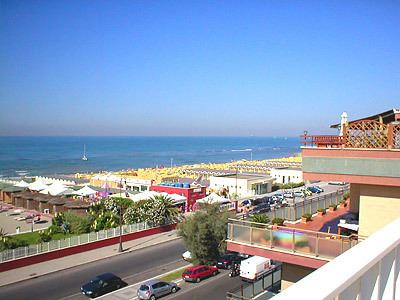Country Italy Elevation 5 m (16 ft) Area 15.36 km² | Demonym(s) Ostiensi Population 85,301 (2010) | |
 | ||
Weather 13°C, Wind SW at 8 km/h, 67% Humidity Points of interest La Spiaggetta, PARCOLIDO, Piazza dei Ravennati, Parco Canale dello Sta, monumento a Pier Paolo Pa | ||
Ostia (/ˈɒstiə/) is a large neighbourhood in the X Municipio of the commune of Rome, Italy, near the ancient port of Rome, named Ostia, which is now a major archaeological site known as Ostia Antica. Ostia (also called Ostia Lido or Lido di Roma or Lido di Ostia) is also the only municipio or district of Rome on the Tyrrhenian Sea and many Romans spend the summer holidays there. With about 85,000 inhabitants, Ostia is the first or second-most populated frazione of Italy, depending on whether Mestre is counted.
Contents
Map of Ostia, Rome, Italy
Geography
The town is located on the Tyrrhenian coast, close to Acilia and separated from Fiumicino by the mouth of the Tiber River (Tevere).
History
The neighbourhood was founded in 1884 near the remains of Ostia Antica, the port city of ancient Rome. This was possible after reclamation of the nearby marshland (the pond of Ostia), which was infested by malaria. The first inhabitants were peasants coming from Ravenna, in Romagna. Due to the opening of the urban Roma-Ostia railway in 1924, the new village soon became the favourite sea resort of the Romans, while many Art Nouveau houses were built on the waterfront.
The new village was connected to central Rome through the new Via Ostiense, which was opened in 1907. During the Fascist period, the government massively expanded the neighbourhood, which got its ultimate architectural character thanks to many new buildings in Stile Littorio. New infrastructures, like a second road to Rome (the Via del Mare), the promenade, and a water airport were all built during this period.
After World War II, many bathing establishments were built on the sea side, and Ostia experienced a tourist boom. The new Cristoforo Colombo avenue connected Ostia with the EUR district in Rome. However, sea pollution, which became apparent during the 1970s, lowered the popularity of Ostia as a sea resort.
The building of the Leonardo da Vinci Airport in Fiumicino in 1956 made Ostia an attractive district for airport and airline workers.
Italian intellectual, film director and poet Pier Paolo Pasolini was assassinated near the water airport (water aerodrome) on 2 November 1975.
In 1976 Ostia became part of the XIII Municipio of the Comune of Rome.
Nowadays, due to the expansion of the city, only the Park of Castelfusano separates Ostia from the other quarters of Rome.
Transportation
The regional Rome-Lido railway line, which carries over 90,000 passengers a day, connects Ostia to the centre of Rome, providing up to 12 journeys per hour during rush hour. The full length of the line is 28.359 kilometres (17.621 mi). It has 13 stops, and the journey time is roughly 37 minutes. The Roman terminal is at Roma Porta San Paolo station, very close to the Piramide stop (Rome Metro, Line B) and close to Roma Ostiense railway station. Rail stops in Ostia are Ostia Antica, Ostia Lido Nord, Ostia Lido Centro, Ostia Stella Polare, Ostia Castel Fusano and Ostia Cristoforo Colombo.
